Understanding the Normal World of a Story’s First Act
 No matter their genre or focus, stories are about something happening—a shift in the status quo. Where the characters begin is not where they end. This may refer to their literal physical surroundings, or to a more metaphorical state of being—or, very possibly, to both. Whatever the case, it is important for authors to understand the idea of the four “worlds” represented within a story’s structure. The Normal World of a story’s First Act is perhaps the most referenced of the four. Fully understanding it (and the other three) can help you visualize a powerful story progression for your characters.
No matter their genre or focus, stories are about something happening—a shift in the status quo. Where the characters begin is not where they end. This may refer to their literal physical surroundings, or to a more metaphorical state of being—or, very possibly, to both. Whatever the case, it is important for authors to understand the idea of the four “worlds” represented within a story’s structure. The Normal World of a story’s First Act is perhaps the most referenced of the four. Fully understanding it (and the other three) can help you visualize a powerful story progression for your characters.
Regular readers of this site may have noticed that I use the terms Normal World and Adventure World quite often in discussions of story structure. I’ve written some before about the Normal World of the First Act, but recently I realized I’ve never delved specifically into the Adventure World of the Second Act. Particularly because the word “adventure” can be misleading when viewed as anything other than symbolic, I want to provide a quick resource that examines exactly what is meant by this term. (Bottom line: the Adventure World is not something belonging only to adventure stories.)
While brainstorming this post, I kept coming full circle to the realization that if the First and Second Acts are “Worlds” unto themselves, then surely the Third Act should be as well. And so, what started out as an idea for a single post has turned into a small four-part series, which will discuss:
1. The Normal World of the First Act
2. The Adventure World of the Second Act
3. The Underworld of the Third Act
4. The New Normal World of the Resolution

The Hero With a Thousand Faces Joseph Campbell (affiliate link)
The terms Normal World and Adventure World are derived from concepts in the Hero’s Journey, made famous by Joseph Campbell in The Hero With a Thousand Faces and originally distilled for writers in Christopher Vogler’s The Writer’s Journey. All these decades later, of course, we can find a multitude of riffs off the Hero’s Journey and further developments of it. I’ve talked about my take on the Hero Arc in my series about archetypal character arcs, which explores five more “journeys” beyond just that of the Hero.
In some ways the terms Normal World and Adventure World are specifically evocative of the Hero’s Journey, since these terms are intricately intertwined with the unique challenges faced by a Hero archetype. In my archetype series, I have used distinctive terms for the First and Second Acts in each archetypal arc (e.g., the First Act in the Queen Arc takes place in the symbolic “Domestic World” and the Second Act in the “Monarchic World”).
However, I personally still use the terms Normal World and Adventure World to apply to all stories of all types. I do this primarily for consistency and clarity, since I have always used these terms in a general way in story-structure discussions, and also because I do feel they are solid umbrella terms that make sense for almost any type of story.
With all that said, today let’s take a peek at the symbolic importance of your story’s Normal World in the First Act.
The Normal World of the First ActThe First Act represents the first quarter of a story, from 1% to 25%. It opens with the story’s Hook, is divided by the Inciting Event halfway through (12% mark), and ends with the threshold of the First Plot Point (around the 25% mark). The First Act is the “setup” for the rest of the story. The protagonist’s interaction with the main conflict will not come to a full boil until the First Plot Point’s entrance into the Second Act, which means that the First Act is primarily about getting your pieces and players into place and, perhaps most importantly, creating the context for the changes that will occur in the story to follow.
What Does the Normal World Symbolize?It is important to remember that these terms are all symbolic. The function of the Normal World in a story is to indicate to readers the status quo from which the protagonist is about to depart. It represents not so much a physical setting but more so a state of being.
As such, the Normal World may indeed represent the most normal of all normalities—quite literally the character’s normal life before it is touched by the conflicts and challenges of the story to come. Because one of the main functions of the First Act is to offer the opportunity for your protagonist’s Characteristic Moment, it is often useful to create a Normal World in which the protagonist is allowed simply to be himself—doing something he normally does.
This normalcy doesn’t have to be healthy for the character or even objectively good or desirable in any way. It is a representation not just of where the character will start the story, but of who he is in the beginning of the story. For good or ill, the Normal World is the place, person, and state of being that the character will leave behind, probably forever, once he engages with the story’s main conflict.
How Does the Normal World Function as a Physical Setting?
The Moon Is a Harsh Mistress by Robert A. Heinlein (affiliate link)
The setting and situation in which your story opens may be anything but normal. Yours may be a sci-fi epic, set in a bizarre setting completely abnormal to the readers’ experience—such as The Moon Is a Harsh Mistress, which is set on… the moon.
Even if the story is set in a real place, here in our actual world, the circumstances in which the protagonist begins the story may still not be what we consider “normal”—such as the prisoner of war camp in The Great Escape.
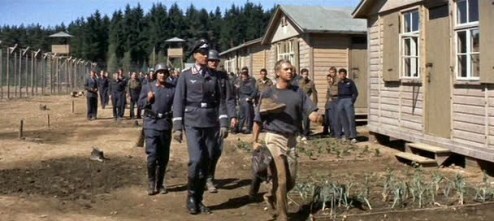
Of course, the Normal World may be utterly and even stiflingly normal, as in stories such as Harry Potter and the Philosopher’s Stone or It’s a Wonderful Life.
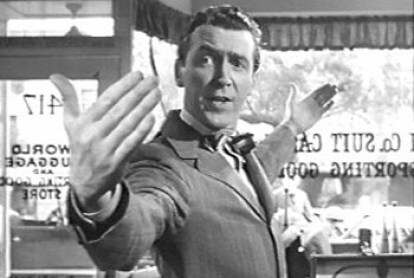
It’s also possible the Normal World may not be particularly normal for your protagonist. The story may open in medias res, with the character having already arrived in a new place or having been thrust into a new situation, as in Footloose or The Bourne Identity.
Whatever the case, the Normal World must still be set up to represent something (place, state of mind, perspective, safety, etc.) that the protagonist will leave behind once she reaches the First Plot Point.
Perhaps most classically, in many stories, the protagonist will indeed physically depart the Normal World setting—to embark on that famous Quest of the Hero’s Journey. For example, Harry Potter is able to escape the horrible normalcy of his life with his relatives and enter the magical Adventure World of Hogwarts.
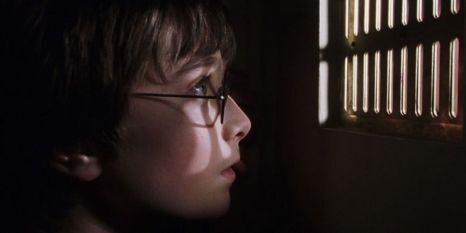
However, you will notice that in most of the stories mentioned above, the protagonist does not actually leave the physical setting at the First Plot Point. For example, George Bailey famously never leaves his small town of Bedford Falls. Indeed, the First Plot Point event of his father’s death is what seals George’s fate and ensures that he cannot escape on his adventures around the world. In this story, the setting introduced in the First Act’s Normal World never changes; the whole story takes place in Bedford Falls. Nevertheless, the First Plot Point signifies a major departure from George’s personal “normal.” Once his father dies and he must take over the family business, his Normal World is changed forever.
In other stories, such as The Bourne Identity, the story opens with the character in a brand-new setting—in this instance a fishing boat in the middle of the sea. Even in stories that begin in medias res, the First Act must still be structurally in tact. It must still set up story to follow, build into an Inciting Event/Call to Adventure, and only then fully thrust the character into the conflict at the First Plot Point. This means that even when the opening setting is new for the protagonist, it must still represent a Normal World.
Jason Bourne is a particularly interesting example, since not only is he in a new place, he also has amnesia and therefore no memory of how he got there or even who he is. How then can he provide any personal context or status quo for a Normal World? The story shows this new and bewildering situation in which he finds himself is his Normal World (and, indeed, for the time being, his only world). The story builds from there, as he begins to collect clues about himself and eventually must leave the comparative safety and normalcy of the fishing boat in order to engage with the main conflict of discovering his identity.
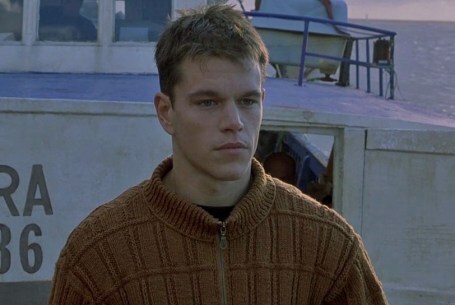

Writing Your Story’s Theme (Amazon affiliate link)
The Normal World is symbolic in large part because what it is really all about is theme. From the perspective of character arc, the Normal World represents the worldview with which the protagonist will begin the story. In the push-pull between a story’s thematic Truth and Lie, the Normal World demonstrates the character’s initial perspective.
In most arcs, the Normal World will represent the Lie the Character Believes. As such, it offers a vivid opportunity to dramatize why the character(s) believes this Lie and how it is impacting his life. The conflict throughout the rest of the story will challenge this Lie with a posited thematic Truth (which may or may not be accepted by the character, depending on what type of arc he is undergoing). This is why it’s so important to create a solid and fleshed-out First Act, which can thoroughly explore the protagonist’s “before” mindset and all the reasons he is currently trapped in it.
This is equally true in a Positive-Change Arc story such as Jane Eyre, a Flat-Arc story such as The Hunger Games, and a Negative-Change Arc such as The Godfather.
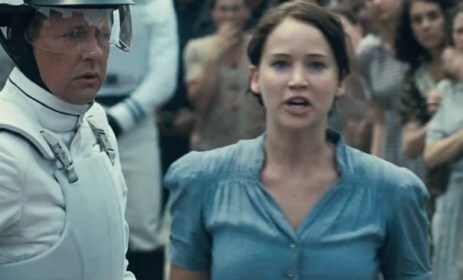
Indeed, as indicated in the previous section, the Normal World may not be so much a physical “world” at all, but it will always represent the “world” of the character’s initial mindset within the story. This is the foundational symbolism of the Normal World. How you choose to further dramatize this subtext with an external setting will depend on the needs of your own individual story.
***
Structurally, everything grows out of the soil of the First Act. When the Normal World is executed with a solid grasp on how it affects plot, character, and theme, the story is all but guaranteed a good start. If you find that its deep symbolism and practical applications of the “Normal World” resonate with you, you can use its foundation to help you frame your entire story.
Stay Tuned: Next week, we will go questing into the Adventure World of the Second Act.
Wordplayers, tell me your opinions! What happens in your story’s Normal World? Tell me in the comments!Click the “Play” button to Listen to Audio Version (or subscribe to the Helping Writers Become Authors podcast in Apple Podcast or Amazon Music).
___
Love Helping Writers Become Authors? You can now become a patron. (Huge thanks to those of you who are already part of my Patreon family!)The post Understanding the Normal World of a Story’s First Act appeared first on Helping Writers Become Authors.





